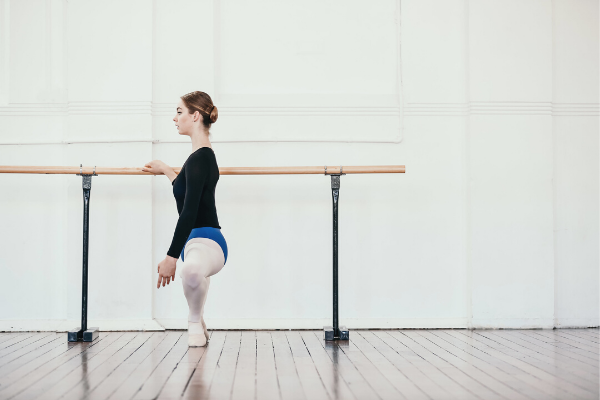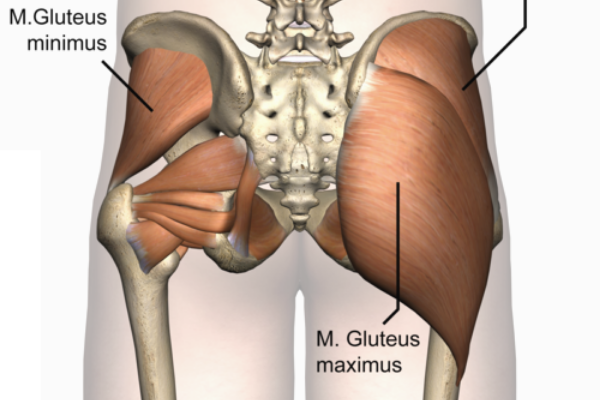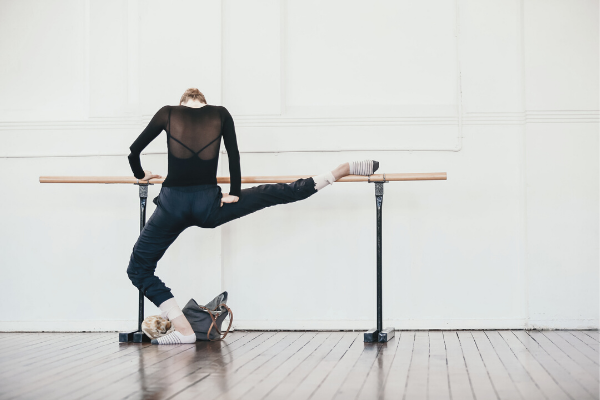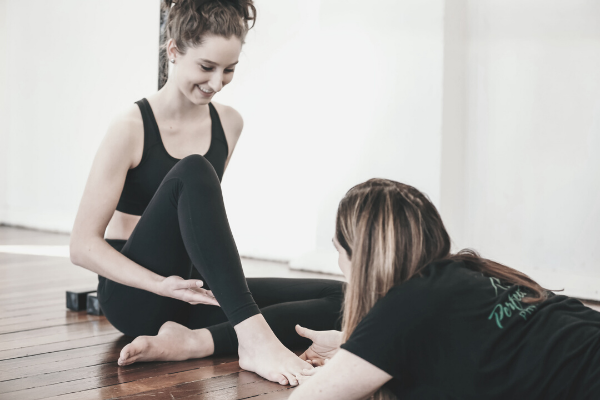Clicking Knees and Pain Between the Toes
Hello!
First off I just wanted to say I love your Perfect Pointe Book! Our entire studio uses it to prepare pre-pointe dancers for pointe.
I had a question about clicking knees… My right knee always clicks whenever I do a fondu or lift my leg. Do you know why this is, and if it is dangerous?
I also have experienced some soreness in my foot for around a year- it is in between my big and second toe, about a thumb’s length away from the ball of the foot. It hurts especially when I point my toe. I also have pronated feet… Could that be the cause of this?
Thank you so much and sorry for my long-winded email!
Annie J
Hi Annie!
Clicking in the knees:
Clicking in the knees is very hard to diagnose via email as there are lots of things that can cause it to happen. To diagnose it correctly you need to take note of whether it is painful and exactly where in the knee the clicking is happening. With any clicking, it’s best to deal with it while it’s just a click and not painful rather than waiting for it to become painful. Some people say that if it doesn’t hurt, don’t worry about it, however, if something is clicking, it usually means that one structure rubbing over something else. Over time this friction will develop into pain if it’s not dealt with.
There are several things that can cause clicking in the knee. For example:
- A releasing pop – This can be pressure in the joint capsule. As the capsule is stretched, it can pop, just like when you crack your back or crack your knuckles.
- A click deep inside of the knee – The menisci (the little pads of cartilage inside your knee) can sometimes develop a crack or a tear. This is usually a little more painful and can often result in the knee locking or getting a little bit stuck.
- Behind the knee cap – There are lots of various clicks that can happen if there’s damage behind the kneecap so it is important for you to get it checked out by a therapist.
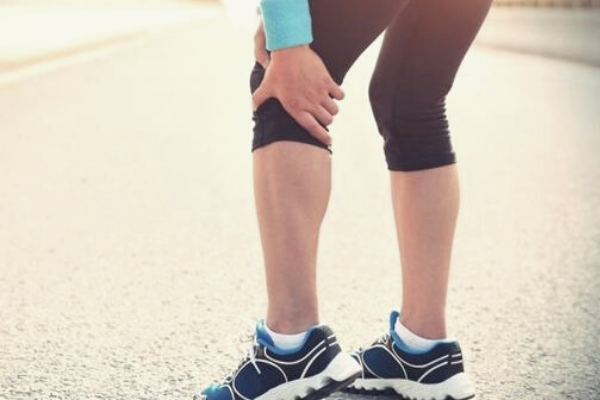
The biggest thing that you can focus on to help prevent any clicking or to help it heal is the control of your alignment. Here are a couple of exercises you can do:
- Knee Bends in Parallel – Looking into a mirror, stand on one leg, and perform several knee bends in parallel. Watch if you can keep your hips nice and level, your knees pointing straight forward and your foot nicely aligned. Notice if your knees collapse in a little bit, especially if you know you tend to roll your feet.
- Knee Bends in Turnout – Leave your foot facing in towards the mirror, then turn your body a quarter turn away and then do the fondu again in turnout. Watch the alignment of your hip, your knee, and your ankle when you’re doing this. This simple test can be a key to picking up some discrepancies or weaknesses in your leg alignment that may be putting a lot of pressure on that knee.
If you don’t have great turnout but you’ve got your foot turned out a little bit too far, and your foot is rolling in, this can place pressure on the inside of the knee and can damage a lot of the structures in there. So please watch your alignment, especially as this click is happening on fondu.
Pain Between the Toes:
If you’ve got pain between the first and second toes, again there are lots of different reasons for this. For example:
- Pain right underneath the ball of the foot and more under either the big toe or the second toe can be caused if your metatarsal is a little dropped and is resulting in the bone pressing excessively down into the ground when you’re walking and going on demi-pointe.
- Pain right between the toes – This could be something called a Neuroma which is where the nerve can become thickened due to constant pressure. This may happen if there is compression across that area (such as in pointe shoes) resulting in the thickened nerve getting squashed between the two bones. This is very important to get checked out professionally, and if it is a neuroma, you need to work out how to offload pressure to reduce the pain.
If the pain is happening only when you’re pointing your foot, it may also be one of the little muscles that sit under the ball of the foot, one of the little lumbricals, or one of several other structures.
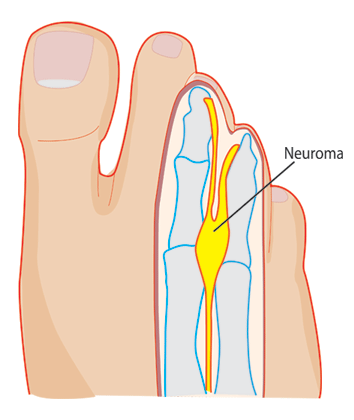
To help alleviate the pain, try putting a toe separator in between those toes just to stop the compression. Another thing you can try is having a slightly wider fitting pointe shoe to give a little bit of space, rather than one that really compresses those toes when you are on pointe.
It is recommended to see if you can find a therapist who specialises in working with dancers if at all possible, to make sure that you get a correct diagnosis and a good rehabilitation plan so that you can get back to dancing as soon as possible.
Pointe Resources
If you are looking to delve deeper into this topic, check out the following programs:
- The Perfect Pointe Book: This course was originally designed to help students and dance teachers safely prepare for pointe work. The four stages of tests and exercises within the book are ideal for pre-pointe preparation classes, students close to achieving pointe shoes and students already en pointe looking for extra strength and technique training.
- Pointe Range: This online program comprises of 41 clear and concise videos, totalling just under 2 hours play time, this course begins with a series of assessments to establish exactly what structures are restricting your pointe range. It then explores a diverse array of massage techniques, joint mobility exercises and fascial mobilisers to safely improve your pointe range. This is followed by an in depth look at retraining all of the muscles that stabilise the foot and ankle to allow you to actually use your new found pointe range in class.
- Pointe Intensive: This online virtual workshop is designed for both Dance Teachers & Health Professionals working with dancers. This three day Intensive will give you the most up-to-date advice in the industry to help you understand your students’ needs, analyze their differences, and them you the tools to help your students become the best dancer they can be.



